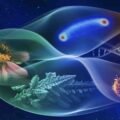Copper phthalocyanine (CuPc), a common teeth whitening agent, also works in nanotransistors and could open the door to safe and reliable edible electronics, according to Italian research.
They discovered that the amount of material that people already ingest through routine dental hygiene was sufficient to make a transistor. The team works for Milan’s Istituto Italiano di Tecnologia (IIT-Italian Institute of Technology), an organization with a history of pursuing advances in edible electronics.
Edible Electronics
With the continued advancement of medical technology, the safe transport of devices inside the human body is one of the main focuses. Surgeries are expensive and come with a risk of complications. The ITT team is working on edible electronics to improve accessibility. Their goal is to create biomedical sensors that can be safely swallowed unattended, relieving some of the growing workload of healthcare workers.
To achieve this, they began to look at which substances that can be ingested can also act as semiconductors. Their approach to the search was unconventional. Instead of looking at materials already approved for intentional human consumption, they looked at additives that are inadvertently ingested without problems as a byproduct of other applications, such as toothpaste and lipstick stains. In this area they discovered copper phthalocyanine.
From Whitener to Power Source
Copper phthalocyanine is a synthetic crystal most commonly used as a blue dye, a common ingredient in toothpaste for about 15 years. When added to toothpaste, it sticks to the enamel, creating a whiter appearance. The team began their research in two phases by evaluating whether the amount needed to grow functional transistors would be safe or lead to toxicity in the human body. Throughout the day, the substance falls from the teeth. Analyzing various clinical data and laboratory tests, they concluded that the average person ingests about half a milligram of CuPc daily.
It turned out that there was plenty of substance to make many transistors. “With the amount of copper phthalocyanine we ingest every day, we could theoretically make about 10,000 edible transistors.” said lead author Elena Feltr. The study identified “molecular flatness, good air stability, and demonstrated field-effect charge carrier mobility” among some of the most promising features of CuPc for their intended application. In addition, its low solubility in body fluids such as saliva makes CuPc-based transistors particularly suitable for oral administration.
Production of the edible transistor
Their innovation involved coupling this new semiconductor with an existing circuit manufacturing method. An ethylcellulose substrate forms the basis of the circuit. A CuPC film is then evaporated onto the substrate and an inkjet prints food-grade gold electrical contacts onto it. Another common food additive, chitosan, a gelling agent, is used as a gate to enable low-voltage operation below 1 V. Test results showed that the transistor should have stable functionality for more than a year when exposed to air and be capable of current modulation of two orders of magnitude.
The lab where the research took place, run by Mario Caironi, has a history in edibles technology. Last year, he led a project that involved designing an edible battery. They plan to continue research on this frontier, including work on the European RoboFood project. The next step for CuPC-based transistors will be tuning the edible substrate to better control CuPc crystal growth. Beyond that, they seek to identify other substances suitable for making electronics that can function inside the human body.

the paper”A fully edible transistor based on toothpaste pigment” published in Advanced Science on September 16, 2024.
Ryan Whalen covers science and technology for The Debrief. He holds a degree in History and a Master of Library and Information Science with a certificate in Data Science. He can be reached at ryan@thedebrief.org and followed on Twitter @mdntwvlf.

